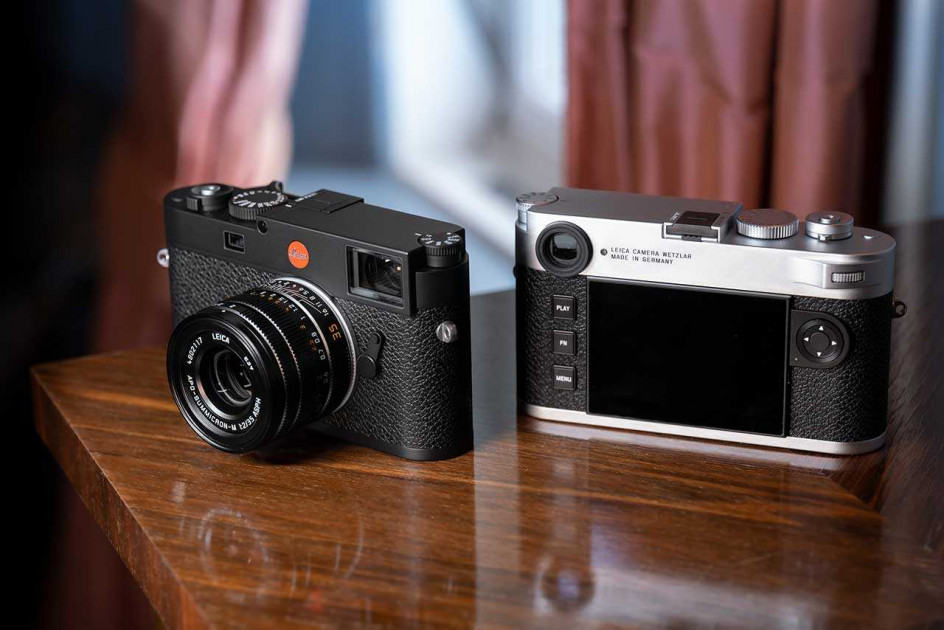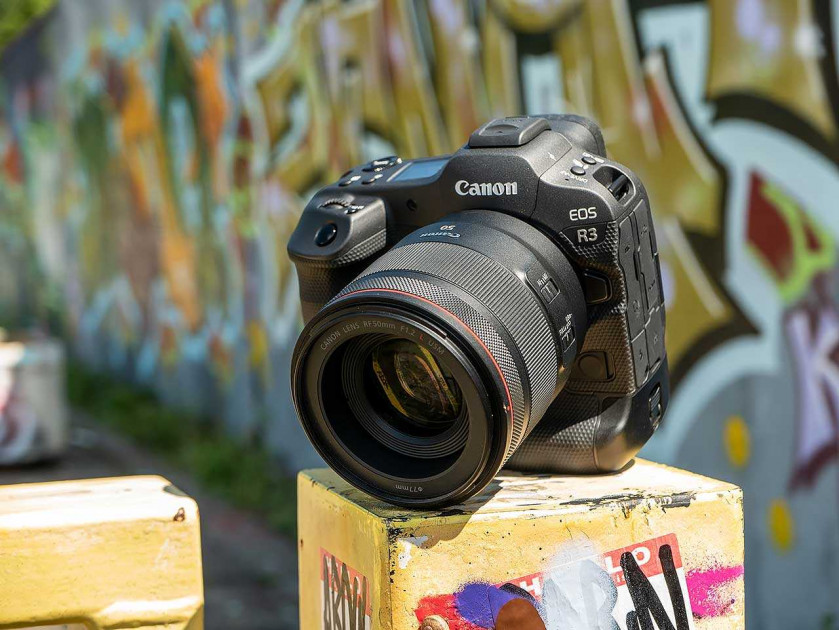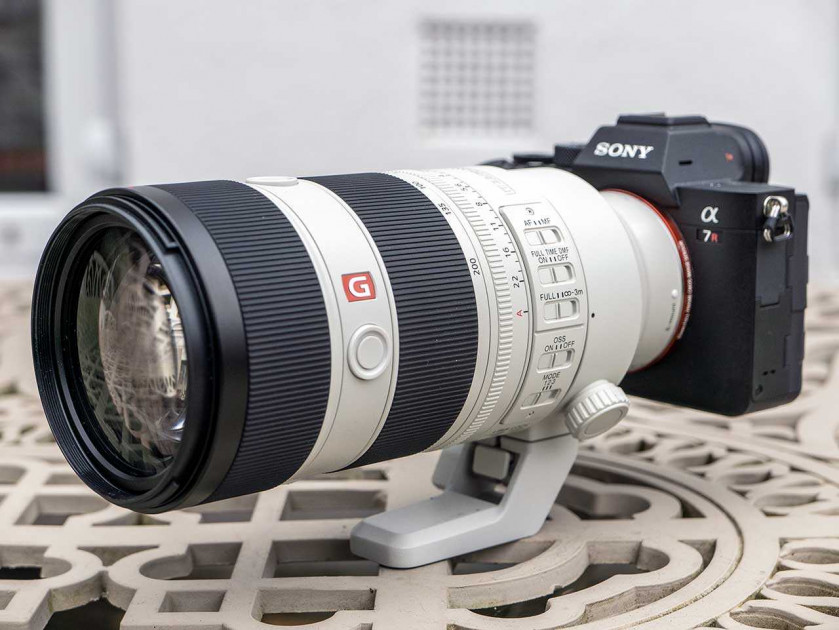
The new Leica M11 rangefinder camera has a unique triple resolution BSI CMOS sensor that can record 60, 36 or 18 megapixels images using the full sensor area.
Other key new features include an expanded ISO range, extended battery life, 64Gb internal storage, USB-C connectivity and a more streamlined and intuitive menu system.
The Leica M11 is available worldwide from 13th January 2022, priced at £7,500 including VAT in the UK and $8,995 in the US.
Leica Press Release
The new Leica M11 – A Legend reinvented.
Wetzlar, 13th January 2022. The new Leica M11 combines the experience of traditional rangefinder photography with contemporary camera technology, delivering maximum flexibility to every photographer. Featuring an exclusive triple resolution sensor, expanded ISO range, dual memory, extended battery life and a streamlined and intuitive menu system, the Leica M11 represents a new benchmark in digital photography and the most flexible M-System camera in Leica’s storied history.
At the heart of the new Leica M11 is a full-frame BSI CMOS sensor with Triple Resolution Technology. Raw image files in DNG format and JPEGs can be recorded at 60, 36 or 18 megapixels, always using the full sensor area. The 60-megapixel option delivers unprecedented image quality and detail resolution, exploiting the full optical potential of Leica’s latest APO Lenses for the M-System – whereas the lower resolutions enable faster camera performance, extended burst lengths, and smaller files.
A special IR + UV cut filter – comprising of two extremely thin, cemented layers of glass – achieve an especially effective correction of even the most oblique rays of incident light. Thanks to a new colour filter array, the camera also offers an improved, more natural colour reproduction.
While maintaining the iconic look of a traditional Leica M, the carefully optimised design of the Leica M11 is focused on efficiency and ergonomics. The controls have been arranged in a unique layout around the new, 2.3 million pixels, high-resolution touchscreen. The menu structure of the M11 remains consistent with that of the Leica SL2 and Q2, unifying the acclaimed interface for a more user-friendly experience.
The Leica M11 has a sensitivity range of ISO 64 to 50,000; it records a 14-bit colour depth and has a dynamic range of up to 15 stops. With its Maestro III processor, the Leica M11 offers a fluid and responsive operation, even at the highest resolution and image quality. With the optional electronic shutter featuring a shutter speed of up to 1/16000 of a second, photographers are empowered to work with wide open apertures, in bright light – without ND filters. The M11 marks the first-time multi-field metering in rangefinder mode will be available, affording photographers a valuable tool to curate light.
The black-finish variant of the Leica M11 features a top plate made of high-quality aluminium with an especially scratch-resistant coating, resulting in a body that is approximately 20% (100 grams) lighter than its silver-chrome counterpart. By comparison, the silver-chrome M11 features a classic brass top plate and weighs in at 640 grams.
Unique to the M11 is the deliberate omission of the traditional base plate, offering photographers easy direct access to the battery and SD card. In addition to the SD card slot, the Leica M11 is equipped with a generous internal storage capacity of 64 gigabytes. As a result, the M11 is the first M model to save image files simultaneously onto two different storage media. The 1800mAh battery stores 64% more energy than before, and combined with the camera’s more efficient operation, allows for considerably longer shooting sessions with a single charge. In addition, the newly added universal USB-C port also serves to charge the camera’s battery, using most USB-C chargers.
Upgraded connectivity features of the Leica M11 will be available through a new firmware version in the second half of 2022. This will enable the new M11’s advanced connectivity capabilities that will elevate users’ mobile workflows and enhance the Leica FOTOS app with the possibility to embed location data, access images via Bluetooth connection, and allow increased transfer rates. Moreover, the Leica M11 is already an Apple “Made for iPhone and iPad” certified accessory and as such, offers unique abilities with the included Leica FOTOS cable.
With the evolution of the Leica M comes new accessories to enhance the rangefinder experience. The new Visoflex 2 electronic viewfinder features 3.7-megapixel resolution to provide outstanding image control in Live View mode. Encased in a metal exterior, the Visoflex 2 perfectly matches the M11 in terms of design and functionality. Full-frame viewing and the precise focusing of Leica lenses is supported by the Visoflex 2’s large diopter adjustment range of -4 to +3 and 90 degree tilt function. To improve ergonomics without obstructing access to the battery and SD card, photographers will have the option to complement their M11 with a newly designed handgrip. The new handgrip doubles as a tripod mount, where the Leica M11 can be attached to Arca-Swiss-standard tripod heads without the need for any additional equipment.
Leica M11: Witness the Future
“We are very proud of the new M11,” says Stefan Daniel, Executive Vice President Technology and Operations. “This camera is another milestone for Leica. Its inner workings are a completely new development, while the exterior remains true to the iconic Leica M design.”
“As we all know,” says Dr. Andreas Kaufmann, Chairman of the Supervisory Board of Leica Camera AG, Wetzlar, “the iconic Leica M-System has accompanied dedicated photographers worldwide over decades, giving them a superior tool for witnessing their time and creating outstanding pictures. The new M11 will continue this legacy with outstanding technology, based on the experience since 1925.”
Please download imagery HERE. For further details, please contact Jon Holt at [email protected] or Ben Jones at [email protected] The Leica M11 is available worldwide from 13th January, 2022 at 2pm, the RRP is £7,500 including VAT.
LEICA M11 Specifications
Camera type: Digital system camera with rangefinder
Type no.: 2416
Order No.: Black: 20 200 (EU/US/CN), 20 202 (JP), 20 206 (ROW)
Silver: 20 201 (EU/US/CN), 20 203 (JP), 20 207 (ROW)
Buffer: memory 3 GB
DNG™: 15 recordings
JPG: > 100 recordings
Storage medium: UHS-II (recommended), UHS-I, SD/SDHC/SDXC memory card (SDXC cards up to 2 TB, internal memory 64 GB)
Material: Black: full-metal housing made of magnesium and aluminum, leatherette cover
Silver: full-metal housing made of magnesium and brass, leatherette cover
Lens mount: Leica M bayonet with additional sensor for 6-bit encoding
Operating conditions: +0 to +40°C
Interfaces: ISO accessory shoe with additional control contacts for Leica flash units and Leica Visoflex 2 viewfinder (optional accessory),
USB 3.1 Gen1 Typ-C
Tripod thread: A 1⁄4 DIN 4503 (1⁄4”) with stainless steel in the base
Dimensions: ca. 139 x 38,5 x 80mm
Weight: Black: approx. 530 g/455 g (with/without battery)
Silver: approx. 640 g/565 g (with/without battery)
Sensor
Sensor size: CMOS sensor, pixel pitch: 3.76 μm, 35 mm: 9528 x 6328 pixels (60.3 MP)
Processor: Leica Maestro series (Maestro III)
Filter: RGB color filter, UV/IR filter, no low-pass filter
File formats: DNG™ (raw data, loss-free compression), DNG + JPG, JPG (DCF, Exif 2.30)
Image resolution: DNG™ L-DNG 60,3 MP 9528 x 6328 pixels
M-DNG 36,5 MP 7416 x 4928 pixels
S-DNG 18,4 MP 5272 x 3498 pixels
JPG L-JPG 60,1 MP 9504 x 6320 pixels
M-JPG 36,2 MP 7392 x 4896 pixels
S-JPG 18,2 MP 5248 x 3472 pixels
The entire sensor surface will always be used irrespective of format and resolution. Digital Zoom 1.3x and 1.8x available (always based on L-DNG or L-JPG)
File size: DNG™ L-DNG approx. 70–120 MB
M-DNG approx. 40–70 MB
S-DNG approx. 20–40 MB
JPG L-JPG approx. 15–30 MB
M-JPG approx. 9–18 MB
S-JPG approx. 5–9 MB
JPG: depending on resolution and image content
Color depth: DNG™: 14 Bit, JPG: 8 Bit
Color space: sRGB
Viewfinder/LCD panel
Viewfinder: Large, bright-line rangefinder with automatic parallax compensation, suitable for -0.5 dpt; optional corrective lenses available: -3 to +3 dpt
Display: Four-digit digital display with items show on the top and bottom, Image field limiter: two lit frames: 35 mm + 135 mm, 28 mm +
90 mm, 50 mm + 75 mm (automatic switchover when lens is attached)
Parallax compensation: The horizontal and vertical difference between viewfinder and lens is compensated automatically in line with the relevant focus
setting. Congruence of viewfinder and actual image. The size of the bright-line frame matches the distance:
– at 2 m: the exact sensor size of approx. 23.9 x 35.8 mm
– at infinity: (depending on focal length) approx. 7.3% (28 mm) to 18% (135 mm)
– less than 2 m: less than sensor size
Viewfinder magnification: x0.73 (all lenses)
Large-base rangefinder: Split or superimposed image rangefinder shown as a bright field at the center of the viewfinder image
LCD panel: 2.95” (Active Matrix TFT), Gorilla Glass 5 cover glass, 2 332 800 dots, format 3:2, touch control available
Shutter
Shutter type: Electronically controlled focal plane shutter and electronic shutter function
Shutter speeds: Mech. shutter: 60 min to 1⁄4000 s
Electro. shutter function: 60 s to 1⁄16000 s
Flash Synch: up to 1⁄180 s
Optional noise reduction via additional “black picture” (can be disabled)
Shutter button: Two-stage (1st stage: activation of the camera electronics including exposure metering and metering memory lock, 2nd stage: taking the picture)
Self-timer: Delay time: 2 s or 12 s
Bildfolge: Single
Continuous – Low Speed (3 fps)
Continuous – High Speed (4.5 fps)
Interval Shooting
Exposure Bracketing
Focusing
Focus range: 70 cm to ∞
Focus mode: Manual (focus assist functions Magnification and Focus Peaking available)
Exposure
Exposure metering: TTL (exposure metering through the lens), with working aperture
Metering principle: Exposure metering is done by the image sensor for all exposure metering methods (in Live View mode and in rangefinder mode)
Exposure metering methods: Spot, Center-Weighted, Multi-Field
Exposure modes: Aperture priority mode (A): Automatic shutter speed control with manual aperture preselection
Manual (M): manual setting for shutter speed and aperture
Exposure compensation: ±3 EV in 1⁄3 EV increments
Automatic bracketing: 3 or 5 shots, graduations between shoots up to 3 EV, in 1⁄3 EV increments, additional optional exposure compensation: up to ±3 EV
ISO sensitivity range: Auto ISO: IS0 64 (native) to ISO 50 000, also available in flash mode
Manual: ISO 64 to ISO 50,000
White balance: Automatic (Auto), Default (Daylight – 5200 K, Cloudy – 6100 K, Shadow – 6600 K, Tungsten – 2950 K, HMI – 5700 K, Fluorescent (warm) – 3650 K, Fluorescent (cool) – 5800 K, Flash – 6600 K), manual metering (Gray card), manual color temperature setting (Color Temperature, 2000 K to 11,500 K)
Flash
Flash unit connector: Via the accessory shoe
Metering principle: Flash exposure metering is done by the image sensor for all exposure metering methods (in Live View mode and in rangefinder mode)
Flash sync time: 1⁄180 s, slower shutter speeds available, automatic switchover to TTL linear flash mode with HSS-compatible Leica system flash units if sync time is undercut
Flash exposure metering: Using center-weighted TTL pre-flash metering with Leica flash units (SF 26, SF 40, SF 58, SF 60, SF 64) or with system-compatible flash units, remote controlled flash SF C1
Flash exposure
compensation: SF 40: ±2 EV in 1⁄2 EV increments
SF 60: ±2 EV in 1⁄3 EV increments
Other: ±3 EV in 1⁄3 EV increments
Displays in flash mode
(in the viewfinder only) Flash icon: Connection of an external flash unit
Equipment
WLAN: The Leica FOTOS app is required to use the WLAN function. The Leica app is available from the Apple App Store™ or the Google
Play Store™. 2.4 GHz/5 GHz* dual band IEEE802.11 a/b/g/n/ac Wave2 WLAN (standard WLAN protocol), encryption method: WLAN-compatible WPA™/WPA2™, access method: infrastructure mode
Bluetooth*: Bluetooth v4.2 BR/EDR/LE, BR/DR-channel 1-79, LE-channel 0-39 (2402–2480 MHz)
GPS*: Geotagging via Leica FOTOS app using Bluetooth
* Available after Firmware Update during second half of 2022
Menu languages: English, German, French, Italian, Spanish, Russian, Japanese, Simplified Chinese, Traditional Chinese, Korean, Portuguese
Power supply
Rechargeable battery
(Leica BP-SCL7): Li-Ion (Lithium-Polymer) rechargeable battery, rated voltage: 7.4 V / capacity: 1800 mAh, Charging voltage/current: DC 1000 mAh, 7.4 V, operating conditions: +10°C to +35°C (charging) / +0°C to +40°C (discharged)
Approx. 700 shots (in accordance with CIPA Standard in rangefinder mode), up to approx. 1700 shots (Leica adapted shooting cycle)
Charger (Leica BC-SCL7): Input: USB-C DC 5 V, 2 A, output: DC 8.4 V, 1 A, operating conditions: +10°C to +35°C
Power pack
(Leica ACA-SCL7): Input: AC 110 V – 240 V ~ 50/60 Hz, 0.3 A, output: DC 5 V, 2 A, operating conditions: +10°C to +35°C
USB Power supply: When in standby mode or Off: USB charging function
When On: USB power supply and intermittent charging
Image Gallery
Click on a thumbnail to see the full version.







